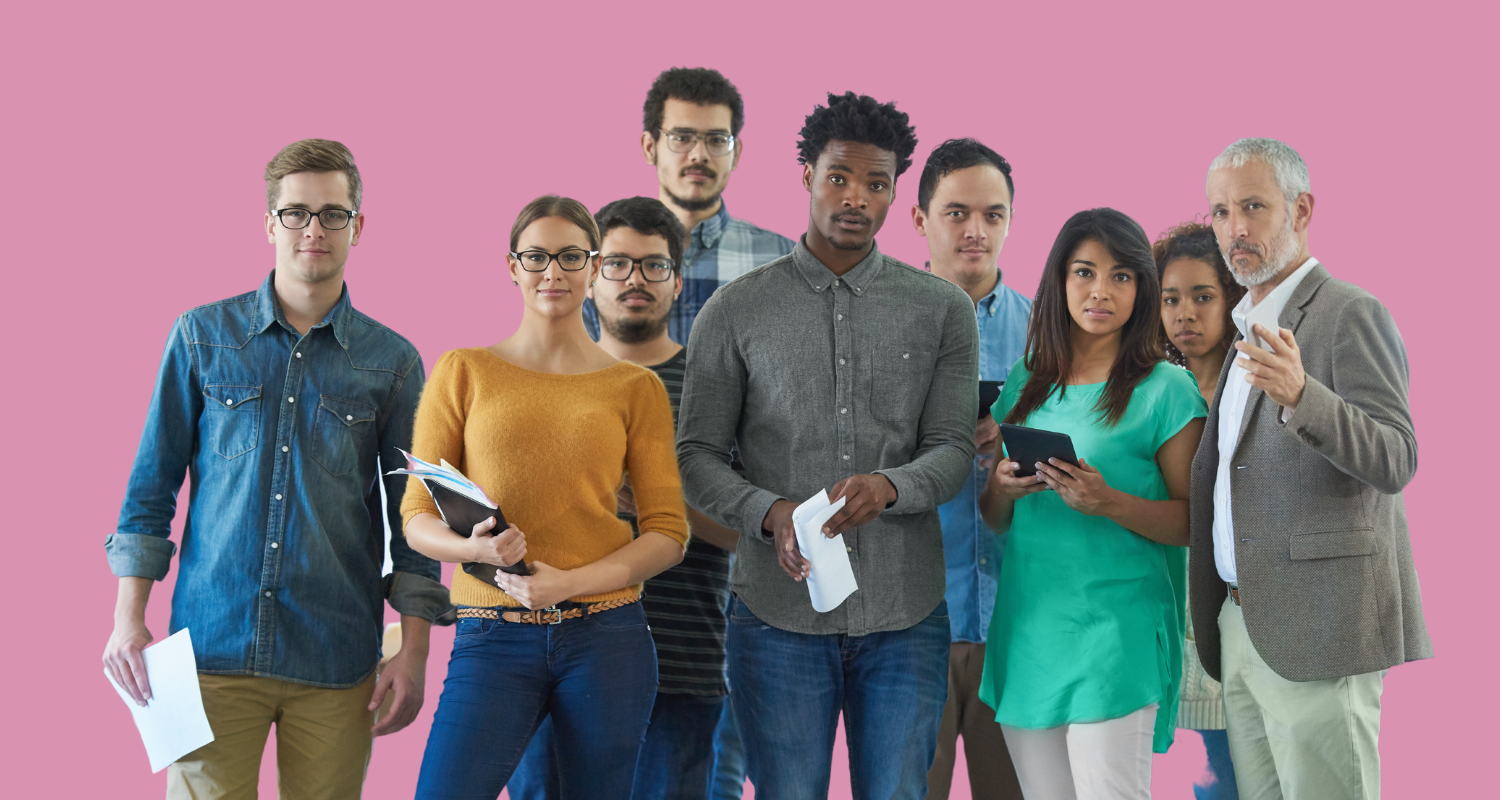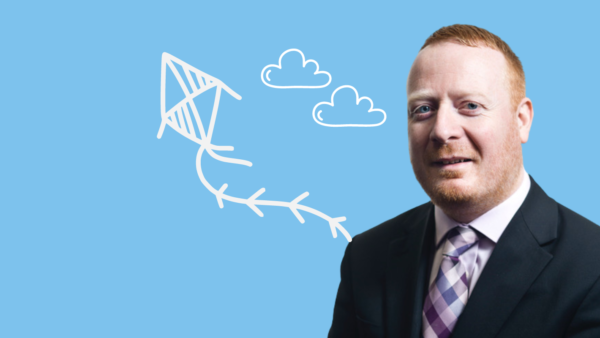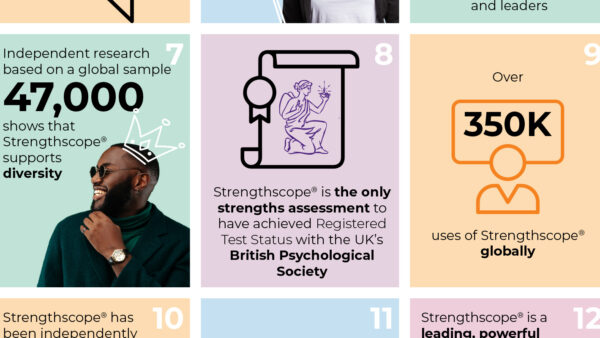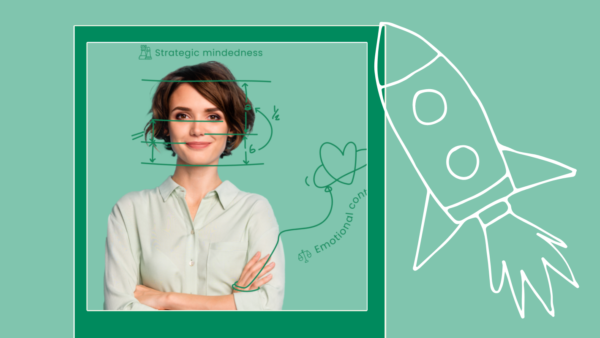Diversity is one of the hottest topics in organisational life and for good reason: it relates to fair treatment of all groups, and all people. Taking a positive approach to diversity in organisations can also bring big commercial benefits, as I touched on in my podcast from not so long ago on ‘diversity and inclusion: how strengths can help’, at Season 7, episode 11. Today’s podcast considers in even more depth the business benefits of diversity and poses the question ‘are you getting the most from the diverse strengths of your employees?’
My name’s Dr Paul Brewerton, the strengths guy, I podcast first thing each Monday, to stimulate your thinking and to set you up for a strong week ahead. I podcast on life and work and getting the most from both, with a powerful strengths flavour running right through.
So, the data is in: by leveraging people’s differences, organisations can boost innovation. And that means seeing diversity as a business-enabler and not just a tick box activity. Taking a positive approach to diversity enables a broader range of perspectives, beliefs and ideas to be leveraged, leading to better information-gathering, problem-solving and decision-making. It also helps in the attraction, retention and engagement of the best people. So it’s a good thing for a whole bunch of reasons.
When organisations plan diversity and inclusion programmes, mostly focus on observable differences like gender, ethnicity, disability and age differences. This is important to address biases and unfairness and ensure that a workforce is representative of its customers.
But it’s also important for organisations to build a culture where differences in thinking and where differences in ways of working are valued and leveraged. A powerful, positive way of building a more diverse workforce is to focus on people’s unique strengths, or the underlying qualities they have that energise them and which they’re great at, or have the potential to become great at.
Uncovering and then utilising people’s unique strengths is still not the default in most organisations. Once someone’s hired, many organisations still focus on people’s weaknesses and what they do wrong rather than helping them find opportunities to play to and develop their unique character strengths. So I have five top tips which should encourage a more balanced approach and help you supercharge diversity and inclusion in your organisation by bringing in a strengths approach in support.
1. Hire for diverse strengths, skills and experience
To be effective in today’s unpredictable world, organisations should analyse their current workforce and identify what’s missing as regards current and future organisational needs. As well as identifying employee groups that are underrepresented, organisations can also measure the personality strengths of their workforce to see if these are well represented and aligned with the strategy of the organisation.
Problems in organisations often arise when teams or even whole workforces are lopsided in terms of personality strengths, or when people don’t know how to utilise these strengths to their best advantage. For example, a team with a majority of people who are results-focused and execution-focused might ignore opportunities to build strong relationships with customers or engage in creative problem-solving about how to deal new challenges in an ever-changing world.
So, make sure that your strength-set is as diverse as possible, and aligned with what your strategy. The hiring process should also be reviewed and upgraded to avoid adverse impact and biases. We would recommend a strengths-based approach to recruitment, as this has been found to increase social mobility and improve the quality and diversity of candidates at all levels.
2. Help everyone (including managers) appreciate the value of their own and others’ strengths
Because of the negativity bias that is still everywhere in society (for more on this, listen to one of my earliest podcasts, way back at season 1, episode 2), we find that most people don’t understand their strengths well and even when they do, they often take them for granted or don’t know how to use them to maximise their value for the organisation.
It’s often the case that people assume that their organisation, or their line manager, doesn’t understand or appreciate their strengths. Helping people discover and share their unique strengths using a tool that can give you a common framework for conversation like Strengthscope® is an important starting point.
When combined with thorough training for line managers on the strengths approach, this can lead to more positive performance and development conversations about the value of the different strengths that each employee can bring. It helps team members to support one another in areas which drain them and where they are less effective and have lower levels of motivation. Buddying up in complementary ways to overcome areas which are weaker or demotivating is one of the most powerful ways to bolster performance, but it’s not used anything like as much as it could be in most organisations.
3. Use character strengths as well as skills and knowledge to allocate your people to projects and tasks
As well as using the most up-to-date data on employees’ skills and knowledge, it is just as important to use objective data on people’s character strengths when deciding who to allocate to projects, tasks and teams. Doing this gives you the best chance of getting the right mix of diverse strengths and skills to complete the project or task well.
4. Encourage people to get to know each other better informally
Organisations that build diverse cultures create opportunities for people to meet socially to get to know one another better. Some of the things we do at Strengthscope, for example, are: ‘getting to know you’ meetings during induction, a buddy scheme during induction, regular check ins for the whole team online, after work social meetings, regular team off-sites which always involve a social element, and most recently, mystery team activities, where different departments host some kind of informal fun activity like a quiz, or bingo and where people can get together and get to know each other better. These opportunities for informal interactions build trust and cohesion and help people get to know each another beyond their jobs.
5. Challenge people to use their strengths in new and different ways
Encourage people to stretch beyond their comfort zone and apply their strengths in new and different ways to achieve their goals and create even more value for the organisation, but their way. Give employees the freedom, support and coaching to find their own path to achieve results based on their unique strengths, skills, beliefs and background. And be sure to celebrate their success when it comes.
To achieve long-term success, a diversity and inclusion strategy needs to be positive, focused on organisational priorities and lived by everyone in the company, particularly senior management. By focusing your diversity and inclusion programme around understanding and building on strengths, as well as addressing underrepresented groups in the organisation, you can create an organisation where people learn to appreciate and value others for their differing strengths, skills and viewpoints.
As well as breaking down biases, taking a strengths approach creates a more positive, collaborative and open-minded culture where innovation and performance can thrive.
This podcast is available on all major podcast platforms. Find it on Apple podcasts, Spotify, Google podcasts, Stitcher, ACast and Soundcloud. Check out the back catalogue, leave a review and subscribe to get them every Monday morning!











